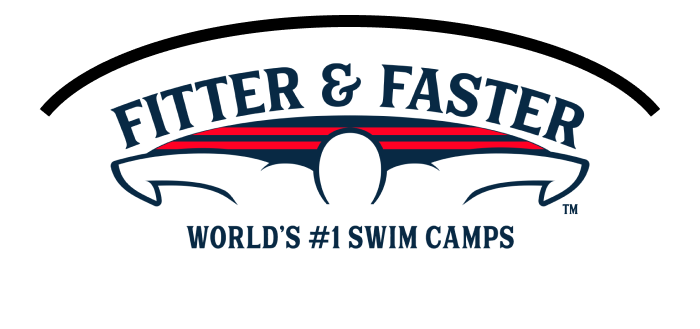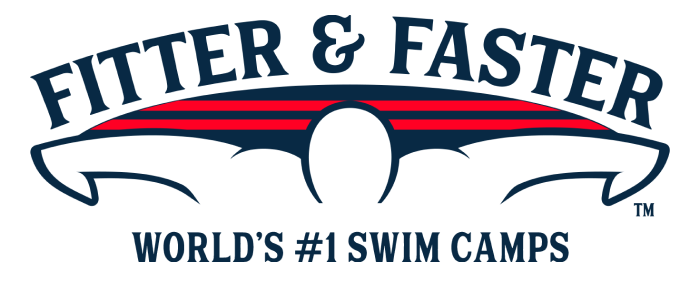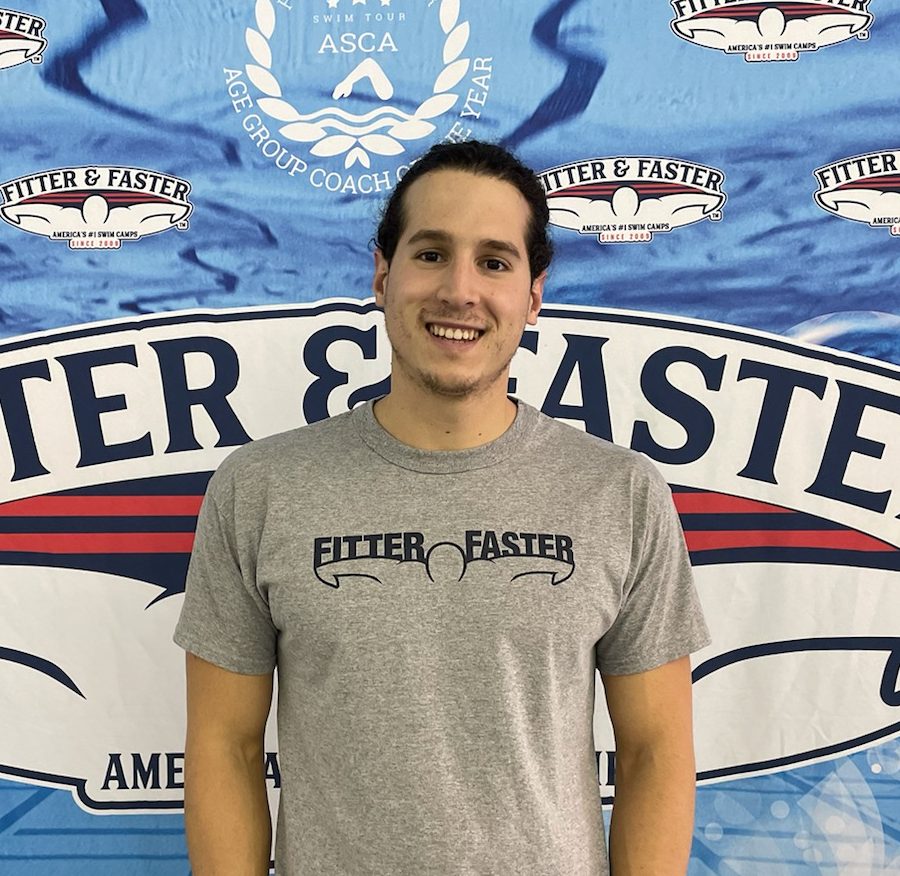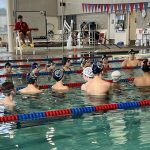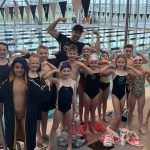The Essentials for Faster Racing Swim Camp (Ages 11 & Over)
Daland Swim School
135 E Wilbur Rd,
Thousand Oaks,
CA 91360
Introducción
Fitter & Faster is producing a 2-day swim camp for competitive swimmers ages 11 & over at Daland Swim School in Thousand Oaks, California on January 18 & 19, 2025! We are also holding a special competitive enrichment swim camp for ages 7 to 10, click here for more details.
THE ESSENTIALS FOR FASTER RACNG (Ages 11 & over)
DAY 1 (Saturday, January 18):
-> Session 1: Starts, Underwaters & Breakouts
-> Session 2: Butterfly Technique
DAY 2 (Sunday, January 19):
-> Session 3: Flip Turns, Open Turns & Finishes
-> Session 4: The Essentials of Sprinting
Scroll down for details on the curriculum!
-> Availability in each session is limited to 24 participants to ensure the highest level learning experience.
-> SAVE when you purchase the "Entire Camp Bundle”.
START TIMES:
Sessions 1 & 3: Check in 8:45 AM, Camp 9-11:30AM
Sessions 2 & 4: Check in 12:15 PM, Camp 12:30-3 PM
Participantes sugeridos
Our top priority is to provide a world-class learning experience for all participants at all of our camps. This camp has sessions for swimmers ages 11 & older. Participants will range from one year of competitive swimming experience to AAAA times and faster. If you are the parent of a child under the age of 11, CLICK HERE!
Plan de estudios
In this four-session swim camp, your swimmer will receive world-class guidance from elite clinicians at Fitter & Faster, focusing on key elements essential for enhancing overall racing performance! We understand that achieving peak performance demands ongoing refinement, which is why even the most elite swimmers are dedicated to perfecting the very skills we'll be honing with your athlete.
Session 1: STARTS, UNDERWATERS & BREAKOUTS
The better a swimmer’s technique is off the starting block, the more speed they will carry into the water. Session 1 of this swim camp will help your swimmer improve their start, underwater dolphin kicking, and breakouts! This sequence is not only the fastest part of every race, but it is also the part of the race in which elite swimmers cover the most ground with the most efficiency.
- BLOCK STARTS: To ensure an explosive start, a swimmer needs to set themselves up properly on the block. The elite clinicians will work with participants on the optimal positioning of your swimmer’s entire body, to allow for a quick reaction time and optimal speed.
- WATER ENTRY: Starting the race with a smooth entry into the water will boost your swimmer's speed, and carry the momentum generated off the block or wall. Becoming skilled at the water entry is crucial for any start, and significantly contributes to your swimmer's overall race!
- STREAMLINE: The streamline - when done properly - is the fastest a swimmer travels while in the water. Proper streamlines are even faster than underwater dolphin kicking. Even the most elite swimmers in the world are constantly working on improving their streamline. Your swimmer will get tips to improve their streamline, and gain a better appreciation of what they need to do on every single wall in practice and in races.
- INITIATING UNDERWATER DOLPHIN KICKING: Top age group and elite swimmers maximize their streamline on every single lap. They don’t start their underwater dolphin kicking while they’re still achieving maximum speed in their streamline! They also don’t want to start the underwater dolphin kicking after their streamline has begun to slow. Your swimmer is going to learn how to time when to begin their underwater dolphin kicking.
- POWERFUL UNDERWATER DOLPHIN KICKING: There are a few different techniques that swimmers use when underwater dolphin kicking. The common theme of these techniques is that the best swimmers kick up and down with equal power. We will show your swimmer the different techniques that elite swimmers use and teach them how to implement.
- NUMBER OF UNDERWATER DOLPHIN KICKS: Figuring out the optimal number of kicks off each wall, for each race, is essential to fast swimming. Elite swimmers want to spend only the absolute necessary amount of time underwater to establish speed with each length. They want to avoid losing their breath and taking weak kicks.
- BREAKOUTS: Many swimmers unintentionally add movements in their breakouts that reduce speed by creating drag. In this session, participants will focus on perfecting their breakout timing to maintain momentum and power into each lap.
Session 2: BUTTERFLY TECHNIQUE
At the highest level of swimming, butterfly is the second-fastest stroke and beautiful to watch because of its rhythmic and powerful strokes. There are some complexities to establishing a smooth, rhythmic fly, but with practice and attention to detail, your swimmer can master the stroke and begin swimming it for longer distances and at very fast speeds!
- BODYLINE: A butterfly race is going to be fastest with a proper bodyline. Even the slightest adjustment of the chin, neck, and/or back can make a huge difference. As swimmers mature in the sport and grow physically, their body position shifts and bad habits can emerge. Participants will learn and practice proper posture and core engagement to have a strong foundation for better technique, creating a full-body connection for more hydrodynamic and efficient butterfly strokes.
- KICK: Each butterfly stroke has two kicks to propel the swimmer towards the other end of the pool! If the kicks are properly timed and equally strong, they can positively impact your swimmer’s efficiency and stroke timing! Your swimmer will work on how and when to kick in butterfly for maximum speed.
- PULL: Long and smooth strokes allow swimmers to have a more efficient and fluid butterfly. The pull in butterfly keeps a swimmer accelerating forward. Your clinicians will work with participants to establish an early vertical forearm, “the catch”, enabling the swimmer to put immediate pressure back on the water. Properly completing the stroke keeps the swimmer moving forward efficiently and fast.
- BREATH: The timing of the breath in butterfly has a direct relationship on a swimmer’s body position, pull, kick, and TIMES! At this session, we will work with participants on breathing with their chin low to the water...and WHEN to breathe in their stroke cycle, so that they develop the most efficient stroke possible!
Session 3: FLIP TURNS, OPEN TURNS & FINISHES
Quick, powerful turns and finishes are crucial to fast times and winning close races. The top age group and elite swimmers aren't using walls just for turning around - they are used to generate speed and momentum going into the next lap. Elite swimmers are constantly working their turns and looking for areas to improve them. During Session 3, we're going to work with your swimmer on taking this crucial part of every race (and practice) to the next level!
- MOMENTUM: The fastest swimmers use walls to generate speed and momentum going into the next lap. Outside of the elite ranks, many swimmers stop or slow down while going into the wall, which kills their momentum! We will work with participants on the intricacies of approaching every wall at top speed and seamlessly initiating their “turn”.
- FLIP TURNS: Flip turns are an opportunity for your swimmers to increase momentum in the middle of a race! Flip turns in which the athletes slow down or have “mechanical” movements negatively impact the speed at which a swimmer comes off the wall. We will work with your swimmer to produce fast flip turns, so that they can explode off the walls at maximum speed.
- OPEN TURNS: Elite butterflyers and breaststrokers utilize speed from their last lap to create momentum and even more speed at the beginning of the next lap. Their open turns are not actually “turns”, but more like high-speed pivots. Participants in this session will work on these techniques to have much faster open turns!
- STREAMLINE, UNDERWATER DOLPHIN KICKING, BREAKOUT PROGRESSION: At this session, participants will continue to work on the progression covered during session 1.
- FINISHES: Setting yourself up for a fast finish is very similar to setting yourself up for a strong turn in any race. Races are won and lost by hundredths-of-a-second at every swim meet. Many races come down to the last few strokes. At this session, your swimmer will learn techniques to set themselves up for a well-timed finish when they are still about 10 yards from the wall.
Session 4: THE ESSENTIALS OF SPRINTING
Swimming fast requires good technique, efficiency, power, and a hardworking athlete. Participants in this session will advance their skills that apply to fast swimming in every stroke. Now is the time for swimmers to establish and cultivate habits to swim their shorter races as fast as possible, with good technique that will position them for success as they mature.
- BODY POSITION: A competitive swimmer’s body position is the key to fast swimming. Most swimmers are NOT hydrodynamic in the water - and that has a big effect on how fast they “allow” themselves to swim - especially as they get older. Let’s find the right body position for your swimmer.
- STROKE LENGTH: Lengthening their stroke will enable your swimmer to “catch” and hold onto more water to propel them as they swim, whereas a short stroke is inefficient and not sustainable for very long. The clinicians will work with participants on this important skill for fast swimming.
- TEMPO: When sprinting short races, young swimmers often tend to take too many strokes (“spin their wheels”) and not “hold onto the water”. At this session, we will find the appropriate tempo to maximize their own personal speed.
- SPRINTING: Earlier in the session, your swimmer worked on body position, tempo, and stroke length. Now, we are going to apply those skills to swimming “all out” on top of the water with efficiency and power.
- SPRINTING & PACING APPLICATION: Swimmers at this session will work on applying their newly developed skills during racing scenarios. As with all the other sessions of this camp, the clinicians will provide feedback for your swimmer to take home and apply at upcoming practices and meets.
ASK QUESTIONS
Swimmers and parents are invited to ask the clinicians questions during a Q&A session. Gain insight into their training regimen, diet and nutrition, and recovery tactics.
WATCH THE CLINICIANS
Observe clinicians swim at full speed and demonstrate a progression of perfectly executed drills to achieve powerful, efficient, and fast swimming.
PUT YOUR SKILLS TO THE TEST
Throughout the camp, swimmers will practice what they've learned with some of the world's most elite Swimmer Clinicians and coaches!
Take a photo, get autographs, and chat with your clinicians!
Inquisitive, Educated Swimmers are Faster Swimmers! Sign up today!


